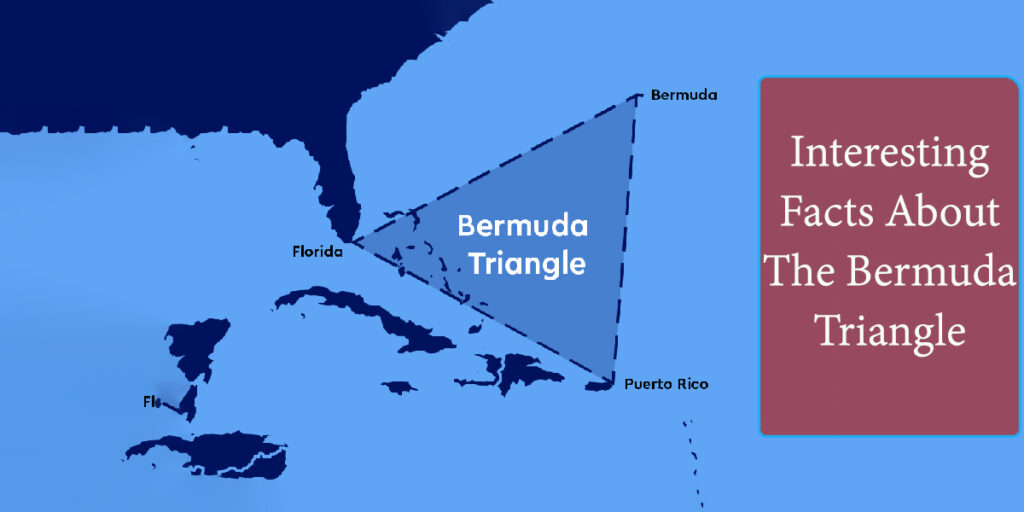The Bermuda Triangle, a loosely defined region in the western part of the North Atlantic Ocean, has intrigued people for decades. With tales of mysterious disappearances of ships, planes, and people, the Bermuda Triangle has become one of the most well-known and enduring mysteries in popular culture. Despite its mystique, the reality behind the Bermuda Triangle is more grounded in fact than in fiction. In this article, we explore the facts behind the Bermuda Triangle, dissecting the mystery and examining what might lie behind some of the most famous incidents.

Location and Geography of the Bermuda Triangle
The Bermuda Triangle’s boundaries are not officially recognized, but most sources define it as a triangular area between the points of Miami (Florida), Bermuda, and Puerto Rico. This region, covering approximately 500,000 square miles of ocean, is one of the busiest shipping lanes in the world. Countless ships and aircraft navigate through this region without incident every year. The Gulf Stream, a major ocean current, flows through the area, adding another layer of complexity to the local weather patterns and oceanic behavior.
The Legend of the Bermuda Triangle
The Bermuda Triangle legend began gaining significant attention in the mid-20th century. It became famous when several high-profile disappearances were reported, the most famous being Flight 19, a group of five U.S. In 1945, Navy bombers disappeared while on a training flight. When the rescue plane sent to find the lost squadron also disappeared, the mystery deepened, leading to widespread speculation and fear.
However, the fascination with the Bermuda Triangle predated this event. References to strange occurrences in the area can be traced back to Christopher Columbus’s first voyage to the New World in 1492. Columbus reported seeing strange lights and experiencing erratic compass readings near the region now called the Bermuda Triangle. These early accounts laid the foundation for the legend that would grow in the centuries to come.
Theories Behind Disappearances
Numerous theories have emerged to explain the disappearances in the Bermuda Triangle, ranging from the scientific to the outlandish. While some attribute the events to paranormal activity, others suggest natural causes.
- Human Error and Navigational Challenges: The Bermuda Triangle lies within a region known for rapidly changing weather, strong ocean currents, and frequent storms. The Gulf Stream, in particular, can cause sudden shifts in weather and affect navigation. Human error in these challenging conditions is believed to be a significant factor in many of the disappearances attributed to the Bermuda Triangle.
- Magnetic Anomalies: Some have suggested that the Bermuda Triangle might be a site of unusual magnetic fields that interfere with navigational instruments, causing pilots and sailors to lose their bearings. While compasses do show natural variation in magnetic declination (the difference between true north and magnetic north), there is no conclusive evidence that the Bermuda Triangle is home to any unusual or dangerous magnetic phenomena.
- Methane Hydrates: One of the more scientific explanations proposed is the presence of large deposits of methane hydrates on the ocean floor within the Bermuda Triangle. Under certain conditions, these deposits could release methane gas, which would rise to the surface and reduce the buoyancy of water, causing ships to sink. However, there is little concrete evidence linking methane gas to any of the Bermuda Triangle incidents.
- Rogue Waves: In recent years, scientists have suggested that the Bermuda Triangle might be prone to rogue waves, which are unusually large and sudden waves that can reach heights of over 100 feet. These waves have been known to capsize ships and could potentially explain some of the maritime disappearances in the region.
- Extraterrestrial Theories: While lacking in scientific evidence, some have proposed that aliens or other paranormal forces are behind the Bermuda Triangle’s mysterious incidents. These theories gained popularity through books and documentaries in the 1970s, but they are generally regarded as pseudoscience by the broader scientific community.
Notable Incidents
Several high-profile disappearances in the Bermuda Triangle have contributed to its mysterious reputation. Here are a few of the more well-known examples:
- Flight 19 (1945): Perhaps the most famous case associated with the Bermuda Triangle, Flight 19 was a group of five U.S. Navy bombers that disappeared during a routine training flight off the coast of Florida. The aircraft lost radio contact and were never seen again. A rescue plane dispatched to find them also disappeared, adding to the mystery. Despite extensive search efforts, no trace of the planes or crew was ever found.
- USS Cyclops (1918): The USS Cyclops, a massive U.S. Navy cargo ship carrying more than 300 men and 10,000 tons of manganese ore, vanished without a trace while en route from Barbados to Baltimore. The ship sent no distress signals, and no wreckage was ever found, making it one of the largest losses of life in the history of the U.S. Navy in a single incident.
- The Mary Celeste (1872): While not technically within the Bermuda Triangle, the disappearance of the crew of the Mary Celeste is often linked to the region’s lore. The ship was found adrift and abandoned in the Atlantic Ocean, with no sign of its crew or passengers, though their personal belongings and cargo were intact. Even now, the crew’s fate is still unknown.
Separating Fact from Fiction
While these incidents are often cited as evidence of the Bermuda Triangle’s mysterious nature, there is a need to approach the subject with skepticism and a scientific perspective. In fact, many of the so-called mysteries surrounding the Bermuda Triangle have plausible explanations.
For example, the U.S. Navy has long maintained that there is no extraordinary risk associated with the Bermuda Triangle. According to official records, the number of disappearances in the region is not disproportionate when compared to other heavily traveled areas of the ocean. The Bermuda Triangle is also one of the busiest maritime and air traffic zones in the world, meaning that more accidents are statistically likely to occur simply because more ships and planes pass through the region.
Moreover, many of the incidents attributed to the Bermuda Triangle, including the disappearance of Flight 19, can be explained by human error, equipment failure, or harsh weather conditions. For instance, it’s known that Flight 19 encountered poor weather, and the pilots likely became disoriented and ran out of fuel.
Conclusion
The Bermuda Triangle, despite its reputation as a zone of mystery and paranormal activity, is not as inexplicable as many believe. While there have been some high-profile disappearances, many of these can be explained by natural phenomena, navigational challenges, and human error. The legend of the Bermuda Triangle has been fueled by sensationalism, but when examined through a scientific lens, the mysteries are often less dramatic than they seem. However, the allure of the unknown ensures that the Bermuda Triangle will continue to captivate imaginations for years to come.
![]()









